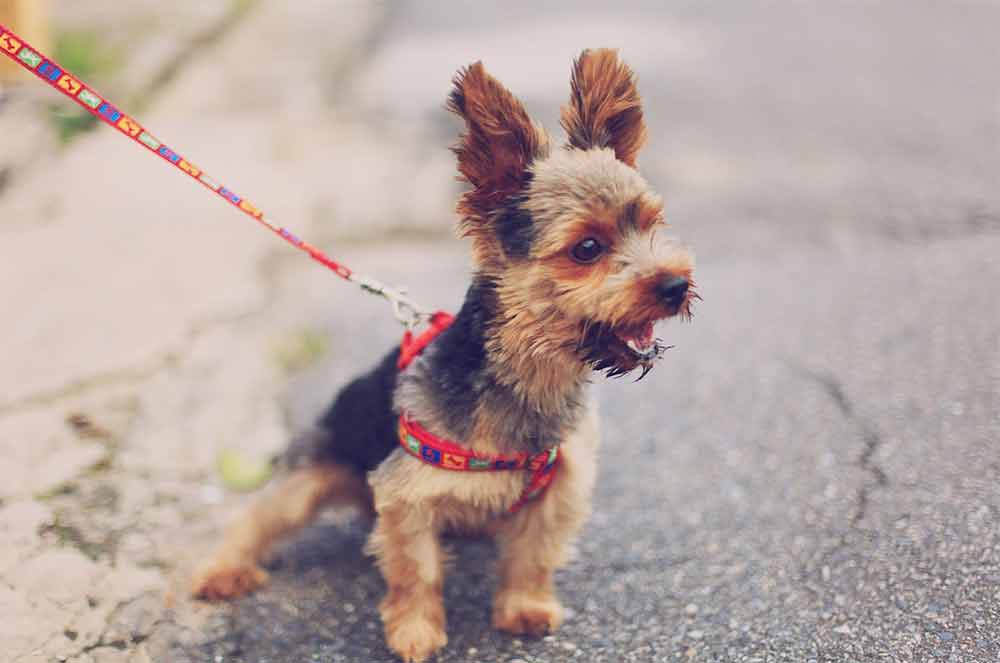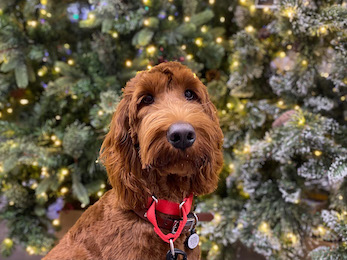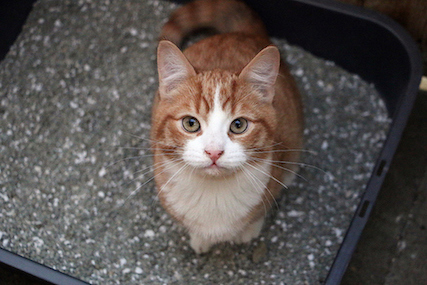Reactivity, whether that be on leash, in the backyard, or even when guests come over can be uncomfortable at best and potentially dangerous at worst. Training for dogs that behave in reactive behavior can improve the quality of life for the dog as well as reduce the stress you as an owner may feel when trying to engage in simple tasks like walking your dog or having friends over. The first thing to note is that we at Beyond the Dog, prefer talking about the behavior as being reactive or aggressive, rather than labeling a dog as a “reactive dog” or an “aggressive dog.” As owners who love their dogs, it can be heartbreaking to be told you “have an aggressive dog” especially when the truth is that there are contexts or environments that may evoke aggressive or reactive behavior out of your dog – NOT that your dog is inherently aggressive. The second important note before diving into training your dog is that often reactivity involves BOTH classical and operant conditioning. For a quick review on what those learning processes are independent of reactivity, check out our What is Behavior Modification with Dogs blog.
Why Reactivity? Classical and Operant Conditioning Go Hand in Hand
One of the main reasons a dog may engage in reactive behavior is due to an unconditioned or conditioned fear response. Think about something you may be afraid of: snakes, heights, spiders, anything. You may have an increased heart rate just thinking about that stimulus. In the presence of that stimulus you may sweat, get goosebumps, have a spike in adrenaline or other “involuntary behavior.” This is no different in dogs. There are a number of reasons why a dog may have a history with a stimulus that evokes fear – from under socialization to a bad experience with that stimulus. Additionally, the dog may try to engage in what we would describe as an operant behavior to get out of the situation that evokes the emotional response, such as running away or biting/lunging. These operant behaviors are what we describe as removal-maintained or escape-maintained. By getting out of the situation, either by running away or making the stimulus go away, the problematic behavior is reinforced. Said simply, it is more likely to happen again. And not only is the behavior more likely to happen again, other, similar behavior is also likely. As an example, if a growl is not effective, the dog may bark or lunge. If the dog gets escape with that escalation, the more challenging behavior will then be reinforced and there is now a larger problem on your hands.
Can You Train Reactivity out of a Dog?
Although it can feel hopeless at times when your dog is barking incessantly on a walk, the good news is that there are treatment interventions that can really help you and your dog.
Training dogs that engage in reactivity or aggression often requires the help of a specialized subset of dog trainers with a history of training in behavior consultation. These specialists have experience with both classical and operant conditioning to best help your dog. This training works to both systematically desensitize your dog to aversive stimuli and to teach your dog more appropriate operant behavior to engage in that competes directly with reactivity. Your trainer may recommend feeding meals in locations that are typically challenging for your pet as well as specific exercises to get your dog used to these situations. Knowing what conditions evoke problem behavior in your dog is the first step. For example, some dogs are more reactive on leash, while others are reactive when novel people go into your home. Identifying what is the hardest for your pet allows specialized trainers to target those situations.

How to Help
Before we go any further, let’s break down classical conditioning in the context of reactivity. This is sometimes referred to as “counter conditioning” in behavioral literature (Echterling-Savage, et al., 2015; Mazur, 1986). A stimulus that elicits a reaction from your dog may be considered an aversive stimulus. By systematically providing a high-valued food item in the presence of that stimulus, we can conduct a pairing procedure. Pairing is simply creating a temporal association with two different stimuli. Pairing, over time, reduces the reactions of your dog by now creating associations with good things like treats in the presence of the stimulus. Empirical studies have used these procedures to treat aggression in animals (e.g., Echterling-Savage, et al., 2015; Salmeron et al., 2021). In fact, research conducted by dog training experts at Beyond the Dog, LLC has specifically evaluated these procedures, their effectiveness to treat the behaviors, and how acceptable these procedures are to owners and other experts in the field (see Echterling-Savage, et al. 2015). These procedures are much more acceptable than punishment-based practices. By using a specific type of pairing called systematic desensitization your dog will be placed in contexts that slowly progress to the stimulus eliciting the reaction. For example, if your dog is reactive toward joggers, you or a trainer may start with the jogger staying 50 ft away or even have the jogger reduce their speed to a fast walk (depending on the individual needs of your pet).
Once you or your trainer has successfully reduced reactivity with pairing procedures, you can focus on the operant side. For example, appropriate leash walking past barking dogs or joggers is a common occurrence with our trainers. We will also practice other commands such as sit or down in the presence of aversive stimuli. Similar to the aforementioned studies, empirical research has demonstrated success in treating problem behavior with operant conditioning in dogs (Yin, et al., 2008). However, instead of jumping right into asking for a sit in the presence of an aversive stimulus, it is best to start training outside of those contexts first to ensure your dog has acquired the behavior before asking them when it is hardest. For example, you may consider starting with practicing sit in the house, then moving to the yard, and finally in the presence of aversive stimuli.

Best Feeding Routines for a Reactive Dog
For dogs that are engaging in reactive behavior, taking advantage of every meal is going to be important. We want as many opportunities for creating positive associations as possible. Therefore, there tend to be two major changes that owners need to make for success. The first is, rather than actively avoiding triggering stimuli, you will want to be prepared to search them out. The second is getting your dog reliably eating out of your hand and eating every single meal outside or in the context of the challenging stimuli. If your dog has never been hand fed, this might be a bit of a process and I will outline it below:
- If your dog is currently eating dry kibble, you are all set to move onto the next step. If your dog is eating kibble with mixed items for any reason other than a medical concern, you will want to eliminate that wet food (we want to save the highest valued items for when it is hardest for dogs).
- Take a handful of the kibble during mealtime, lure your dog into a sit, and feed a small handful. There is no need to ask your dog to sit. Repeat until their meal is complete.
- Once they have mastered “the game” inside the house, take your dog to the front or back yard and feed meals there.
- Now that your dog has fully acquired the expectations of mealtime, the real work begins with the whole purpose of this new routine. It is important to take your dog out to where the stimuli are occurring. Take your dog to an area that is a slight challenge – if your dog is reactive toward people, you may start at the end of your driveway and feed while people are passing. The key is that you want to find a location where your dog will eat, even if it is a little more challenging for them than eating their food in the comfort of home. That means, don’t jump into an area that is too difficult for your dog or you will just set yourself and them up for failure.
This meal routine is NOT a replacement for specific interventions. Instead, it is meant to be a compliment to those interventions to ensure that all meals are being maximized. More specific training is required to address the behavior of concern specifically (see pairing above).
There is Hope for Your Reactive Dog
Having a dog that engages in reactivity can be frustrating and even ostracizing for both you and your pet. Consistent, structured training is key to ensure that your dog is being exposed to these stimuli in a controlled way. Understanding how to help your dog can lead to a calmer existence for all parties involved. If you are feeling overwhelmed training your dog, there are a number of professionals ready and willing to help. We recommend those who use positive reinforcement, avoid aversives such as shock collars, and have specific experience in working with dogs engaging in reactive behavior. Instead, find a reputable company that is led by a Certified Applied Animal Behaviorist (CAAB) or Certified Dog Behavior Consultant (CDBC). If there aren’t any CAABs or CDBC’s in your area, I recommend finding a Certified Pet Dog Trainer (CPDT-KA) or a Certified Behavior Consultant Canine (CBCC-KA).
Echterling-Savage, K., DiGennaro Reed, F. D., Miller, K. L., & Savage, S. (2015). Effects of caregiver-implemented aggression reduction procedure on problem behavior of dogs. Journal of Applied Animal Welfare Science, 18(2), 181-197. https://doi.org/10.1080/10888705.2014.977383
Mazur, J. E. (1986). Learning and behavior. Englewood Cliffs, N.J: Prentice-Hall.
Salmeron, M. C., Payne, S. W., & Hegr, A. B. (2021). Functional analysis and treatment of feline aggression in an animal shelter. Behavior Analysis: Research and Practice, 21(2), 128–139. https://doi.org/10.1037/bar0000185
Yin, S., Fernandez, E. J., Pagan, S., Richardson, S. L., & Snyder, G. (2008). Efficacy of a remote-controlled, positive-reinforcement, dog-training system for modifying problem behaviors exhibited when people arrive at the door. Applied Animal Behaviour Science, 113, 123-138. https://doi.org/10.1016/j.applanim.2007.11.001




